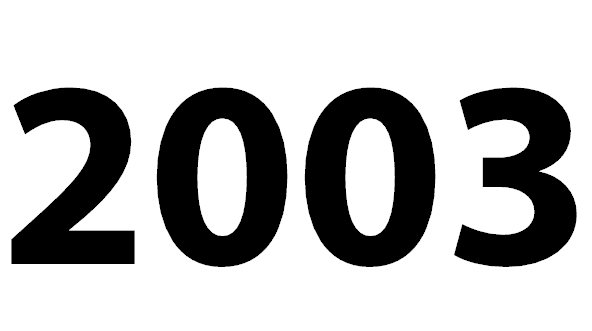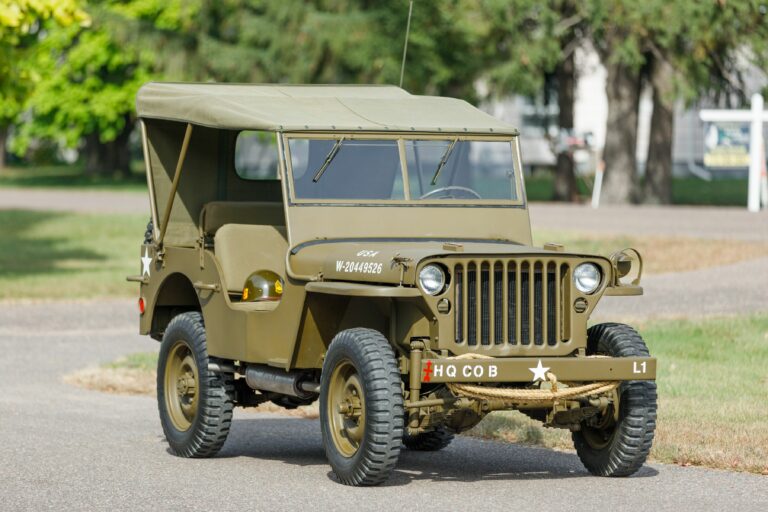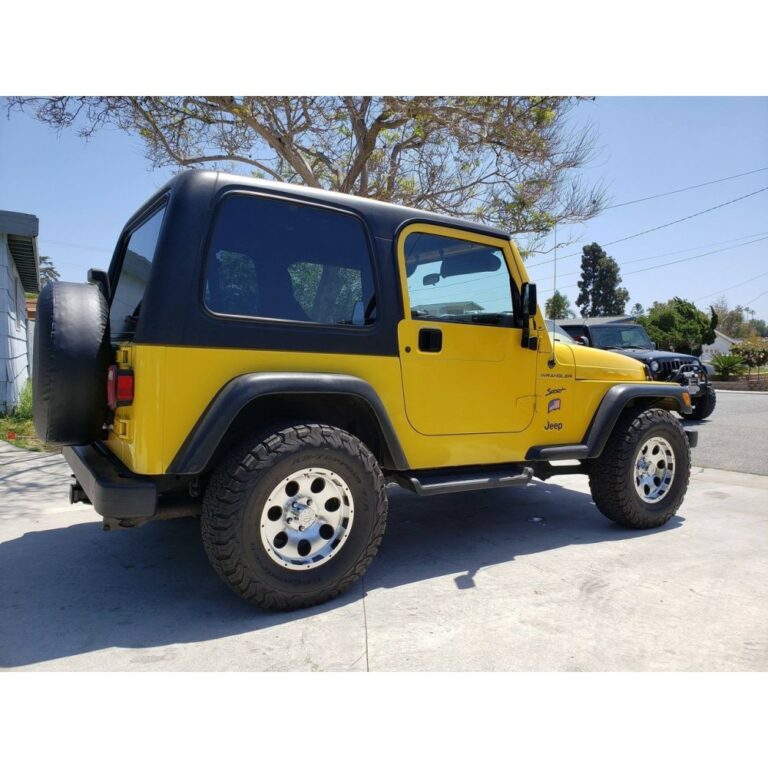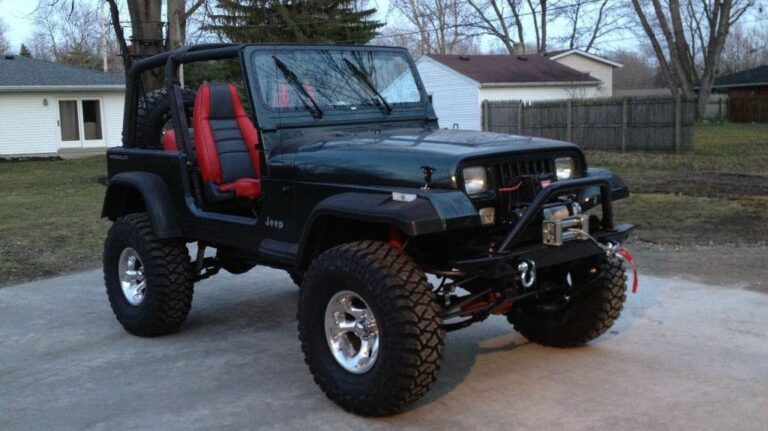2003 Jeep Grand Cherokee Transmission: A Comprehensive Guide to Performance and Longevity
2003 Jeep Grand Cherokee Transmission: A Comprehensive Guide to Performance and Longevity jeeps.truckstrend.com
The 2003 Jeep Grand Cherokee, a popular and enduring SUV, owes much of its capability and driving experience to its robust automatic transmission system. More than just a collection of gears, the transmission is the heart of the vehicle’s powertrain, translating engine power into usable torque for the wheels. Understanding its intricacies, common issues, and proper maintenance is paramount for any owner looking to maximize their Grand Cherokee’s performance, reliability, and lifespan. This article delves deep into the 2003 Jeep Grand Cherokee transmission, offering a detailed guide for owners and enthusiasts alike.
Understanding the Heartbeat: Introduction to the 2003 Jeep Grand Cherokee Transmission
2003 Jeep Grand Cherokee Transmission: A Comprehensive Guide to Performance and Longevity
In the automotive world, the transmission often goes unnoticed until something goes wrong. For the 2003 Jeep Grand Cherokee, this component is particularly critical, enabling its renowned off-road prowess, towing capacity, and smooth on-road driving dynamics. Whether you’re navigating city streets, cruising on the highway, or tackling rugged trails, the transmission meticulously manages the flow of power from the engine to the drivetrain, ensuring optimal performance and fuel efficiency. Given its complex electromechanical nature, a well-maintained transmission is key to preventing costly repairs and preserving the adventurous spirit of your 2003 Grand Cherokee.
Dissecting the Options: Transmission Types in the 2003 Grand Cherokee
Jeep equipped the 2003 Grand Cherokee with different automatic transmissions, primarily depending on the engine option. Recognizing which transmission your vehicle has is the first step in proper understanding and maintenance.
The 42RE (4-Speed Automatic)
- Engine Application: Primarily paired with the 4.0L PowerTech Inline-6 engine.
- Overview: The 42RE is an electronically controlled 4-speed automatic transmission. It’s a tried-and-true unit, known for its durability in many Chrysler/Jeep applications. It features a lock-up torque converter and adapts to driving conditions. While robust, its four speeds are less refined than its five-speed counterparts, especially at highway speeds.

The 45RFE and 545RFE (Multi-Speed Automatic)
- Engine Application:
- 45RFE: Used with the 4.7L PowerTech V8 engine.
- 545RFE: Used with the higher-output 4.7L High Output (HO) PowerTech V8 engine.

- Overview: These transmissions are part of the same RFE family and share a very similar design.
- The 45RFE is often described as a "multi-speed" automatic. While it physically has five forward gears, it functions as a 4-speed with two distinct 2nd gear ratios (2nd prime and 2nd overdrive), giving it the ability to "skip" gears or downshift more aggressively.
- The 545RFE is an evolution of the 45RFE, adding a true fifth forward gear (overdrive), making it a genuine 5-speed automatic. This provides smoother shifts, better fuel economy at cruising speeds, and improved towing capability due to a wider gear ratio spread.
.jpg?t=168533101131)
- Key Features (Common to both RFE units):
- Electronic Control: Fully controlled by the Powertrain Control Module (PCM) or Transmission Control Module (TCM), allowing for adaptive shifting based on driving style and conditions.
- Adaptive Learning: These transmissions "learn" your driving habits and adjust shift points accordingly for optimal performance.
- Dual Overdrive Ratios: While the 545RFE explicitly has a 5th gear, both RFE units are designed for efficiency.
- Robust Design: Built to handle the torque of the V8 engines, they are generally durable when properly maintained.
Common Transmission Problems and Symptoms
Even with proper care, transmissions can develop issues over time. Recognizing the symptoms early can save you from more extensive and costly repairs.
- Slipping Gears: The engine revs high, but the vehicle doesn’t accelerate proportionally, or you feel a sudden loss of power during acceleration. This indicates the transmission clutches are not engaging properly.
- Harsh or Delayed Shifts: Instead of smooth transitions, you might experience a noticeable "clunk" or jolt during gear changes, or a significant delay before the transmission engages a gear (especially from Park or Neutral into Drive/Reverse).
- Lack of Engagement/No Movement: The vehicle won’t move when placed in Drive or Reverse, despite the engine running.
- Unusual Noises: Whining, clunking, humming, or grinding sounds coming from the transmission area. A common whine on RFE transmissions might indicate low fluid or a failing pump.
- Overheating: The transmission fluid temperature warning light illuminates, or you smell a burning odor. Overheating is detrimental and can quickly destroy a transmission.
- Limp Mode: The transmission locks into a single gear (often 2nd or 3rd) to protect itself from further damage, limiting speed and power. This is usually accompanied by a Check Engine Light.
- Check Engine Light (CEL): Various Diagnostic Trouble Codes (DTCs) can be triggered by transmission issues (e.g., P0700 series codes indicating a transmission control system malfunction, or specific solenoid codes like P0750, P0755).
Specific Known Issues:
- Solenoid Pack Failure (45RFE/545RFE): This is a very common failure point. The solenoid pack is an integrated unit containing all the solenoids that control fluid flow to the various clutches and bands. Symptoms include harsh shifts, slipping, erratic shifting, or limp mode.
- Torque Converter Shudder: A vibration or shudder, often felt between 30-50 mph, usually indicates an issue with the torque converter clutch.
- Valve Body Issues: The valve body directs hydraulic fluid to engage gears. Wear or debris can cause sticking valves, leading to delayed or harsh shifts.
- Overdrive Clutch Failure (42RE): On the 42RE, the overdrive clutch pack can wear out, leading to loss of overdrive or slipping in higher gears.
Maintenance and Longevity Tips
Proactive maintenance is the single most important factor in extending the life of your 2003 Grand Cherokee’s transmission.
- Use the Correct Fluid: ATF+4 ONLY! This is non-negotiable. Using any other type of fluid (e.g., Dexron, Mercon) can cause severe damage due to different friction modifiers and viscosity. Always check the fluid bottle for the "ATF+4" specification.
- Regular Fluid and Filter Changes:
- Recommendation: Every 30,000 to 60,000 miles, depending on driving conditions (more frequent for heavy towing, off-roading, or stop-and-go city driving).
- Procedure: A pan drop and filter replacement is generally recommended over a complete "flush," especially for high-mileage transmissions. Flushes can dislodge debris and force it into critical components, potentially causing new problems.
- Check Fluid Levels Correctly: The Grand Cherokee’s transmission fluid level should be checked with the engine fully warmed up, in neutral (N) on level ground. Consult your owner’s manual for the exact procedure.
- Consider an Auxiliary Transmission Cooler: If you frequently tow heavy loads, drive in hot climates, or engage in significant off-roading, an aftermarket transmission cooler can dramatically reduce fluid temperatures, extending transmission life.
- Avoid Aggressive Driving: Excessive hard acceleration, sudden stops, and rapid gear changes put undue stress on the transmission. Drive smoothly.
- Address Issues Promptly: Don’t ignore warning lights, unusual noises, or changes in shifting behavior. A small problem can quickly escalate into a catastrophic failure.
Diagnostic Steps for Transmission Issues
When symptoms arise, a systematic approach to diagnosis is crucial.
- Check Fluid (Level, Color, Smell):
- Level: Low fluid can cause slipping and overheating.
- Color: Healthy ATF+4 is reddish-pink. Brown or black fluid indicates contamination or burning.
- Smell: A burnt smell indicates overheating and internal damage.
- Scan for Diagnostic Trouble Codes (DTCs): Use an OBD-II scanner to check for any stored codes. Even if the CEL isn’t on, pending codes might exist. P0700 is a generic transmission control system code, often accompanied by more specific codes indicating the exact fault (e.g., solenoid circuit open/short).
- Note Driving Conditions: When do the symptoms occur? (Cold, hot, specific gear, specific speed, under load?) This information helps narrow down the cause.
- Professional Diagnosis: If unsure, or if symptoms persist after basic checks, consult a reputable transmission specialist. They have advanced diagnostic tools and expertise to pinpoint complex issues.
Repair vs. Replacement: Making the Right Decision
When faced with a significant transmission problem, you’ll likely consider three main options: repair, rebuild, or replacement.
- Repair: If the issue is minor and isolated (e.g., a faulty solenoid pack, a leaking pan gasket, or a sensor), a targeted repair can be cost-effective.
- Rebuild: If internal components are worn or damaged, a rebuild involves removing the transmission, disassembling it, replacing all worn parts (clutches, bands, seals, gaskets, sometimes valve body or torque converter), and reassembling it to factory specifications. This is often a good option, providing a "like-new" transmission.
- Replacement:
- New: The most expensive option, but ensures a completely new unit.
- Remanufactured: A transmission that has been rebuilt by a specialized factory, often with upgrades to address common design flaws, and typically comes with a good warranty. This is often the best balance of cost and reliability.
- Used: The cheapest option, but carries the highest risk. The history and internal condition are unknown, and the warranty is usually very limited. Only consider this if budget is extremely tight and you’re willing to accept the gamble.
The decision often comes down to the severity of the damage, the overall condition of the vehicle, and your budget. A comprehensive cost analysis should be performed.
Estimated Price Guide for 2003 Jeep Grand Cherokee Transmission Services
Please note that these are estimated prices and can vary significantly based on location, labor rates, parts availability, and the specific shop. Always obtain multiple quotes.
| Service/Part Type | Estimated Cost Range (USD) | Notes |
|---|---|---|
| Basic Maintenance | ||
| Transmission Fluid & Filter Change | $150 – $350 | Pan drop, fluid and filter replacement. Crucial for longevity. |
| Common Repairs | ||
| Solenoid Pack Replacement (45RFE/545RFE) | $500 – $1,000 | Parts and labor. Very common repair. |
| Torque Converter Replacement | $800 – $1,800 | For shudder or internal failure. Requires transmission removal. |
| Valve Body Repair/Replacement | $700 – $1,500 | For shifting issues. Can be rebuilt or replaced. |
| Output/Input Speed Sensor | $150 – $400 | Diagnostic and replacement. Relatively minor. |
| Major Services | ||
| Transmission Rebuild | $2,000 – $4,000+ | Involves removing, disassembling, replacing all worn components. |
| Remanufactured Transmission | $2,500 – $4,500+ | Price for the unit, plus labor for R&R (Removal & Replacement). |
| Used Transmission (Salvage) | $500 – $1,500 (Unit Only) | Plus labor for R&R ($800 – $1,500). High risk, limited warranty. |
| Diagnostic Fee | $100 – $200 | Often waived if repair is performed by the same shop. |
Frequently Asked Questions (FAQ)
Q1: What type of transmission fluid does my 2003 Jeep Grand Cherokee use?
A1: ONLY ATF+4 fluid. Using any other type can cause serious damage and void warranties.
Q2: How often should I change the transmission fluid in my 2003 Grand Cherokee?
A2: Generally, every 30,000 to 60,000 miles. For severe duty (towing, heavy off-roading, extreme temperatures), consider the lower end of that range. Always perform a pan drop and filter change, not a full flush.
Q3: Why is my Grand Cherokee stuck in "limp mode"?
A3: Limp mode (or "limp home mode") is a protective feature. The transmission control module detects a severe fault and limits functionality (often locking into 2nd or 3rd gear) to prevent further damage. It’s usually accompanied by a Check Engine Light. Get the codes read immediately.
Q4: Can I replace the transmission myself?
A4: Replacing a transmission is a complex job requiring specialized tools, a lift, and significant mechanical expertise. It’s generally not recommended for DIY mechanics unless you have extensive experience.
Q5: What’s the difference between the 45RFE and 545RFE?
A5: The 545RFE is an evolution of the 45RFE. While the 45RFE physically has five gears, it functions as a 4-speed with two distinct 2nd gear ratios. The 545RFE adds a true fifth forward gear (overdrive), making it a genuine 5-speed automatic, offering improved efficiency and shift quality.
Q6: Is transmission flushing recommended for older Grand Cherokees?
A6: Generally, no. For high-mileage transmissions that haven’t had regular fluid changes, a complete flush can dislodge accumulated debris and force it into critical components, potentially causing new problems. A pan drop and filter change is safer and more effective.
Conclusion
The transmission of your 2003 Jeep Grand Cherokee is a sophisticated and vital component that largely dictates the vehicle’s driving experience and capabilities. By understanding its specific type (42RE, 45RFE, or 545RFE), recognizing common symptoms of trouble, and adhering to a strict maintenance schedule—especially using the correct ATF+4 fluid—you can significantly extend its lifespan and avoid costly repairs. Proactive care, timely diagnostics, and informed decisions regarding repairs or replacements will ensure your 2003 Grand Cherokee continues to deliver reliable performance for many more miles of adventure.






